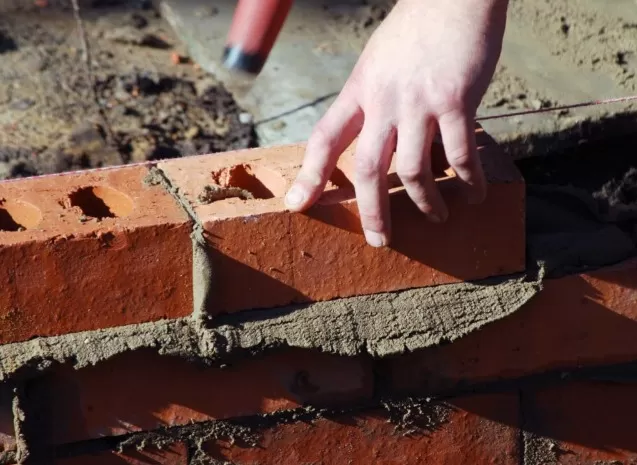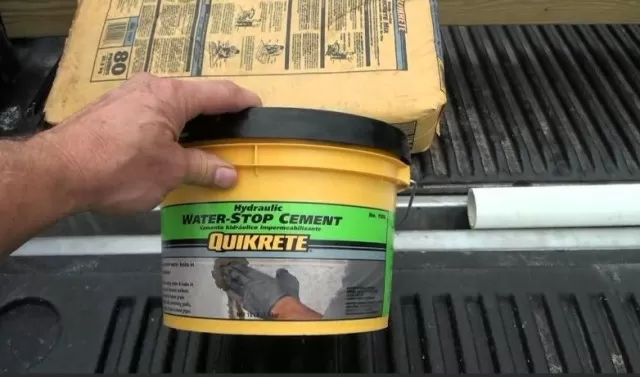Pre-Winter Repairs: Essential Fixes to Tackle. As the winter season approaches, it’s important to address key maintenance tasks to ensure your home remains in excellent condition.
By completing these essential house tune-ups, you can safeguard your property against potential issues and enjoy a comfortable winter. By taking care of these house tune-ups before winter arrives, you can proactively address any potential issues, enhance energy efficiency, and maintain a comfortable and well-maintained home. Prioritizing these tasks ensures your property remains in top shape throughout the winter season.
Preparing Your Home for Chilly Weather: Essential Concrete Repairs and Protective Measures

As autumn settles in and the vibrant foliage transforms into a carpet of fallen leaves, it becomes crucial to ensure that every nook and cranny of your house and property is in optimal condition before the harsh grasp of winter takes hold.
While concrete stands as a stalwart construction material, it is not impervious to the detrimental effects of winter’s freeze/thaw cycles. During this time, the infiltration of water from rain, ice, and snow into concrete cracks can lead to a vicious cycle of freezing and expansion, causing larger cracks or even spalling.
While homeowners typically prioritize tasks such as replacing weather-stripping on exterior doors and sealing gaps around drafty windows, they often overlook the essential steps required to safeguard their concrete structures.
In this article, we will explore seven crucial concrete repairs that demand immediate attention, along with recommended products designed to shield your concrete from the imminent cold season. By implementing these proactive measures, you can ensure the longevity and resilience of your concrete, even in the face of Old Man Winter’s icy grip.
Protecting Your Concrete: Seal Control Joints for Winter
Control joints play a vital role in managing cracks within concrete slabs, ensuring controlled and predictable crack placement.
However, as the winter season approaches, it becomes essential to seal these joints to prevent rain, melted snow, and ice from seeping into them. If water infiltrates the cracks and subsequently freezes, it can exert pressure on the concrete, exacerbating the cracks and potentially widening them. This becomes even more critical when the soil beneath the slab is composed of clay, as it tends to swell when saturated, leading to potential movement of the concrete slab.
Sealing the control joints does not impede their functionality; in fact, it allows them to perform their intended purpose.
In the event of cracking, the pre-cut joints will still serve as the preferred location for the cracks, although they may not be readily noticeable. By filling these cracks with Quikrete Advanced Polymer Self-Leveling Sealant during the autumn season, you can effectively prevent water from saturating the substrate.
This advanced sealant, designed with flexibility in mind, can be conveniently applied using a standard caulk gun. Its self-leveling properties ensure seamless coverage, creating a smooth and level surface across the joint.
To assist you further, we recommend watching a helpful video tutorial that provides a step-by-step demonstration on preparing and filling control joints.
By following these instructions, you can fortify your concrete against the challenges of winter, safeguarding its integrity and minimizing potential damage caused by freezing and thawing cycles.
Preserve Your Brick Wall: Repairing Mortar Joints for Winter

When it comes to exterior brick walls, the mortar joints serve as the weakest point of vulnerability.
As a home’s foundation settles over time, it’s common for cracks to develop in these mortar joints. Repairing even the smallest of cracks becomes imperative before the arrival of freezing temperatures.
This precaution is crucial because when thawed snow and ice seep into the cracks, subsequent freezing can cause the cracks to expand, posing a significant risk of mortar deterioration. To safeguard your brick walls from further damage, it is essential to seal these cracks using a reliable mortar sealant like Quikrete Advanced Polymer Mortar Joint Sealant.
This high-performance sealant plays a pivotal role in preserving the integrity of your brickwork.
By tightly bonding to the sides of the crack, it effectively seals out moisture, preventing the formation of larger cracks and reducing the chances of mortar crumbling away. Additionally, this sealant is designed to have a textured appearance that seamlessly blends with the existing grout, ensuring a visually pleasing result.
To guide you through the process of fixing cracks in your home’s mortar joints, we recommend watching a comprehensive video tutorial that demonstrates crack preparation and sealing techniques.
Following these simple steps, you can effectively repair and protect your mortar joints, fortifying your brick walls against the harsh effects of winter.
Restoring Stucco Integrity: Repairing Cracks and Holes for Winter
Stucco stands as a highly favored siding material in many regions across the country.
However, due to its rigid nature, even minimal house movement can lead to the development of cracks. It is crucial to address these cracks promptly to prevent further damage during the upcoming freeze/thaw cycles. Failure to do so may result in chunks of stucco siding detaching from the wall, creating potential hazards. Additionally, repairing cracks in stucco serves the vital purpose of sealing out moisture, thereby preventing the growth of mold.
For cracks smaller than 1/2-inch wide, an ideal solution is Quikrete Stucco Repair.
This sanded acrylic caulk is specifically designed to match the texture and appearance of the surrounding stucco. By filling these small cracks with this reliable product, you can effectively restore the integrity of your stucco siding while maintaining a seamless visual blend.
In the case of actual holes in the stucco, Quikrete Pre-Mixed Stucco Patch offers a suitable remedy.
This acrylic latex product is applied using a hand trowel, allowing you to fill and repair the holes effectively. Its application ensures a durable and aesthetically pleasing outcome.
To gain a better understanding of the process involved in prepping and filling cracks and holes in stucco, we recommend watching an informative video tutorial.
This resource will guide you step by step, enabling you to successfully restore the stucco’s structural integrity and protect your home from the harsh effects of winter.
By attending to these repairs and taking proactive measures, you can ensure the longevity and visual appeal of your stucco siding while mitigating potential risks associated with freezing temperatures and moisture infiltration.
Securing Your Basement: Repairing Small Leaks in the Wall

Even minor leaks in a basement wall can escalate into significant problems, causing water intrusion, damage to furnishings, and heightened humidity levels that promote mold growth.
The good news is that addressing basement leaks and preventing expensive issues doesn’t always require the intervention of a foundation contractor. By taking proactive measures, you can repair small cracks before they worsen and safeguard your basement.
Cracks that measure less than 1/2-inch in diameter can be efficiently and permanently sealed using Quikrete Hydraulic Water-Stop Cement.
This fast-setting cement product offers an effective solution, as it expands during the setting process, establishing a watertight bond with the existing masonry. The hydraulic cement is provided in a dry powder form and requires mixing with water until it reaches a putty-like consistency.
Once the desired consistency is achieved, it can be kneaded by hand and then pressed into the crack or hole in the wall. Typically, this cement sets in approximately 3 minutes, ensuring a swift and durable repair.
To visualize the straightforward application of this cement product and understand how it can help keep your basement dry during winter, we recommend watching an instructional video.
This resource will demonstrate the simple steps involved, empowering you to successfully tackle basement leaks and maintain a dry and protected basement environment.
By addressing small leaks promptly and employing suitable repair techniques, such as using Quikrete Hydraulic Water-Stop Cement, you can prevent water intrusion, preserve your belongings, and minimize the risk of mold growth.
Rest assured that with the right tools and knowledge, you can effectively protect your basement from the challenges posed by winter.
*The information is for reference only.